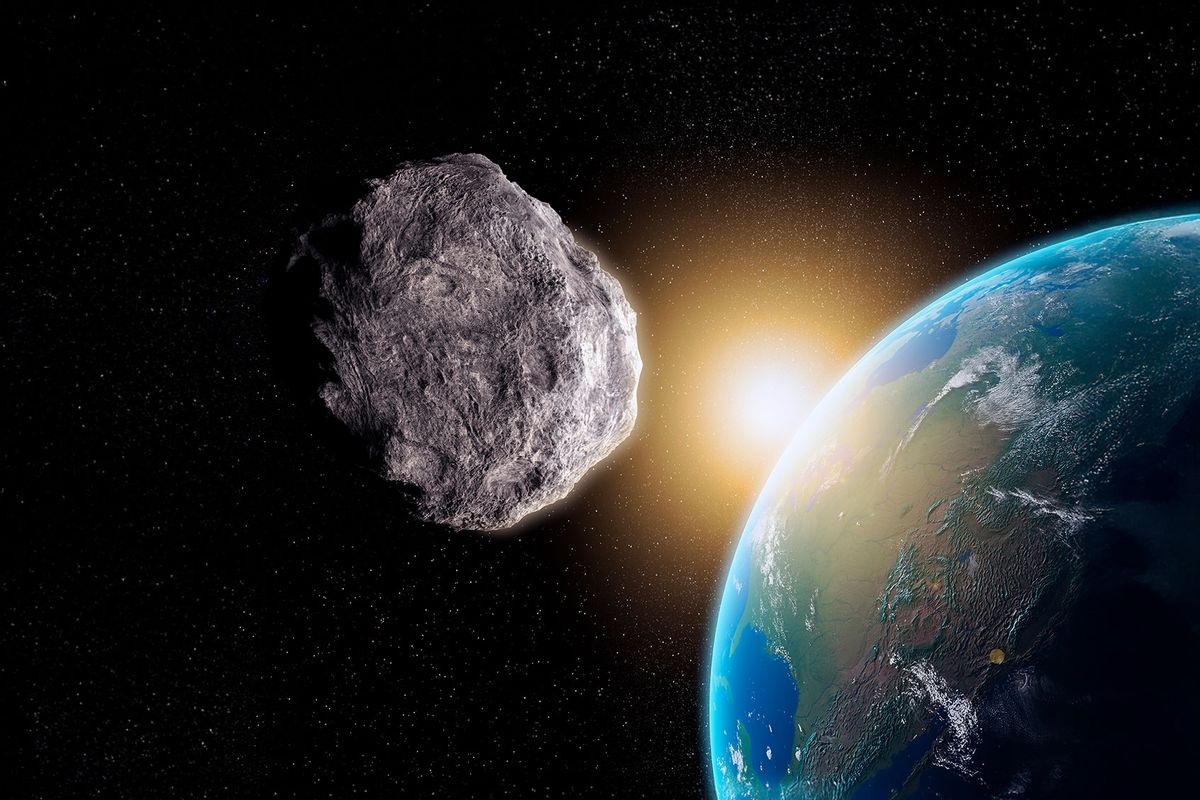The chances that a space rock could hit Earth in less than a decade just went up slightly, according to NASA scientists. The asteroid 2024 YR4, which is expected to pass Earth in 2032, was recently calculated to have a 1-out-of-43 chance of striking our planet. By contrast, last week 2024 YR4 had only a 1-out-of-83 chance of striking our planet.
Before you panic, however, note that 2024 YR4 only measures at a three on the Torino Scale. According to this scale, established by astronomers to help them assess the dangers posed by various near Earth objects, rocks that rank at a three merit concern for astronomers but not the general public. The risk level for this particular space rock has been updated to account for new calculations, but there is still a 97.7% chance that 2024 YR4 misses Earth entirely.
"At this point humanity should not be alarmed about this,” Via Macarena Garcia Marin, a James Webb Space Telescope (JSWT) Project Scientist at the Space Telescope Science Institute, told Salon. “In such cases it is typical for the odds of an impact to be higher when these objects are discovered, and drop as we learn more about them. The important aspect is to collect more data to really understand the situation. For instance, JWST now has a director’s discretionary time program to evaluate its size."
Even if it does hit Earth, experts cautioned that it’s unlikely to cause much damage on a large-scale. Asked if we should be alarmed, Ethan Siegel, a theoretical astrophysicist, told Salon “Absolutely not.”
"Any object that's going to miss us is going to be deemed a 'potential threat' until we measure it well enough."
"It's likely less energetic than even the modest Chelyabinsk impactor from earlier this century," Siegel said, observing that we still haven’t adequately measured 2024 YR4’s potential collision course (hence why its chance of hitting us rose), so scientists must treat any potential unwanted trespassers with the utmost caution. Siegel referenced the Chelyabinsk meteor, which entered Earth's atmosphere over Russia's Chelyabinsk Oblast in 2013. That object was approximately 60 ft (18 m) in diameter, large enough that upon entry it briefly shone brighter than the Sun at a range of up to 60 mi (100 km) away. It injured over 1,600 people, mostly from broken glass.
"Any object that's going to miss us is going to be deemed a 'potential threat' until we measure it well enough to know its trajectory more certainly, and the small size and short period of observations that we have for this object is why we say it has a ~2% chance of impacting us," Siegel said. "With better data, we'll know whether it's going to strike us or simply pass us by, completely harmlessly."
Want more health and science stories in your inbox? Subscribe to Salon's weekly newsletter Lab Notes.
In the improbable event that 2024 YR4 does seem poised to hit Earth, scientists have plenty of plans — some echoing blockbusters like “Deep Impact” — for addressing that crisis. Indeed, in 2022 NASA successfully demonstrated a “Deep Impact”-inspired vehicle known as the Double Asteroid Redirection Test (DART) could collide with a near Earth object.
"We might even have to consider the severe measures of sending up a nuclear weapon to the surface of this asteroid in order to deflect it further," astronomer writer Dr. David Whitehouse told Sky News. Other scientists have suggested possible deflection tactics like lasers, kinetic impactors and so-called “gravity tractors.”
2024 YR4 is currently moving farther away from Earth, which means astronomers will need larger telescopes to continue monitoring it. Despite this difficulty, 2024 YR4 should remain easily visible until April, although it is not expected to return to Earth’s vicinity again until 2028. They are hoping that in the meantime, its motions will alter their calculations in such a way that makes them deem it even less likely to collide with Earth. The rock will remain on NASA’s risk list until at least 2028.
We need your help to stay independent
“Ongoing observations from ground-based telescopes involved with the International Asteroid Warning Network will continue while the asteroid is still visible through April, after which it will be too faint to observe until around June 2028,” NASA said in a statement.
As navigation engineer at the Jet Propulsion Laboratory and Center for Near-Earth Object Studies Davide Farnocchia told CNN, “The longer we track an asteroid, the more precise the prediction. As we collect additional data, the uncertainty in the position of 2024 YR4 in 2032 will decrease. Given that the impact probability is only 1%, it is 99% likely that the Earth will eventually fall outside the swath of possible positions and that the probability would fall to zero.”



Shares